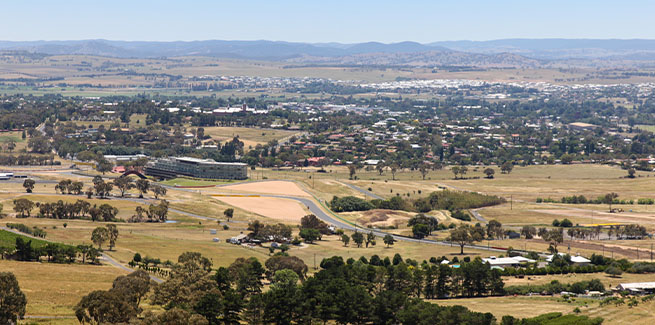New June quarter data from the Commonwealth Bank of Australia (CBA) and the Regional Australia Institute (RAI) has revealed that there was an 11 per cent rise in the number of people moving from capital cities to regional areas compared with the June 2020 quarter.
The local government areas (LGA) that recorded the largest growth in metro movers over the 12 months to June 2021 were located within a three-hour drive from Melbourne, a capital city that has endured the longest COVID-19-related lockdowns in Australia.
The biggest surge in population growth in Victoria included Moorabool (up 68 per cent), Mansfield (up 62 per cent), and Corangamite (up 52 per cent).
The Murray River area in NSW was next in line (up 48 per cent), followed by Alpine in Victoria (up 47 per cent).
Victoria’s Greater Geelong area – which is located one hour outside of Melbourne’s CBD – saw a 26 per cent increase in capital city movers during the full year to June 2021.
Indeed, the spike in city dweller migration into the regions spurred by the pandemic has been particularly pronounced in Greater Geelong, outpacing the national Regional Movers Index (that is, national population flows from capital cities to regional areas).
The number of capital city dwellers who moved into Greater Geelong in the June 2021 quarter is 19 per cent more than in the June 2020 quarter.
Melbourne was the main source of the capital city migration into Greater Geelong, accounting for 90 per cent of the share.
At the same time as this influx of migrants, local housing construction has responded to the demand, rising by 48 per cent compared to the previous year to 4,600 dwellings being approved for construction in 2020-21.
There has been growth in multi-unit developments in Central Geelong as well as growth in detached houses in fringe suburbs.
In addition, the value of non-residential building projects entering the local pipeline in the 2019/20 financial year was 18 per cent more than in the previous year. New government offices, hotels, and education facilities in and around the CBD are in development, according to the CBA research.
The research also found that in the FY20-21, Melbourne’s share of net capital city outflows increased to 47 per cent (up from 39 per cent in 2019-20), while Sydney’s share shrank from 56 per cent in 2019-20 to 49 per cent in 2020-21 (although it still had the highest share of net capital city outflows).
Regional Queensland’s share of net migrants into regional areas grew from 22 per cent in 2019-20 to 28 per cent in 2020-21.
While regional NSW picked up the largest share of net migration into regional Australia, its share decreased from 37 per cent to 34 per cent. Regional Victoria’s share was down from 33 per cent to 26 per cent.
Perth was the only capital city where more residents moved into the city than those who left it, with net migration from Perth down 4 per cent in 2020-21 compared to a 1 per cent decrease in 2019-20.
Regional Western Australia’s share of net regional migration rose from 1 per cent a year earlier to 3 per cent in 2020-21.
Regional settlement increased both in Tasmania (up 6 per cent) and South Australia (up 4 per cent).
Commenting on the trends, CBA executive general manager for regional and agribusiness banking and Regional Australia Institute 2021 Council member Grant Cairns said: “With house prices rising across the capital cities and flexible work options now more commonplace, the decision to make a lifestyle shift and move to a regional area has become a realistic option.
“The experience of lockdowns is front of mind for Victorians, so the desire to seek a tree change is rapidly growing. It is positive to see the development of infrastructure – particularly in regional areas – is growing to meet the increased demand.”
RAI chief economist Dr Kim Houghton said that the index has identified the regional areas that have attracted capital city residents, which could enable local leaders and business owners to prepare for a “burst” of population growth.
“It also shows us places that are coming off the boil in the June quarter, such as Noosa (QLD) and Mildura (VIC),” Dr Houghton said.
“We can also see that the number of regional residents choosing to stay put has increased, which is likely to be contributing to the housing squeeze in some areas.”
To read more about the latest trends in the red-hot Australian property market, pick up a copy of the upcoming October edition of The Adviser.
[Related: Regional movers at highest level since 2018]
 ;
;
